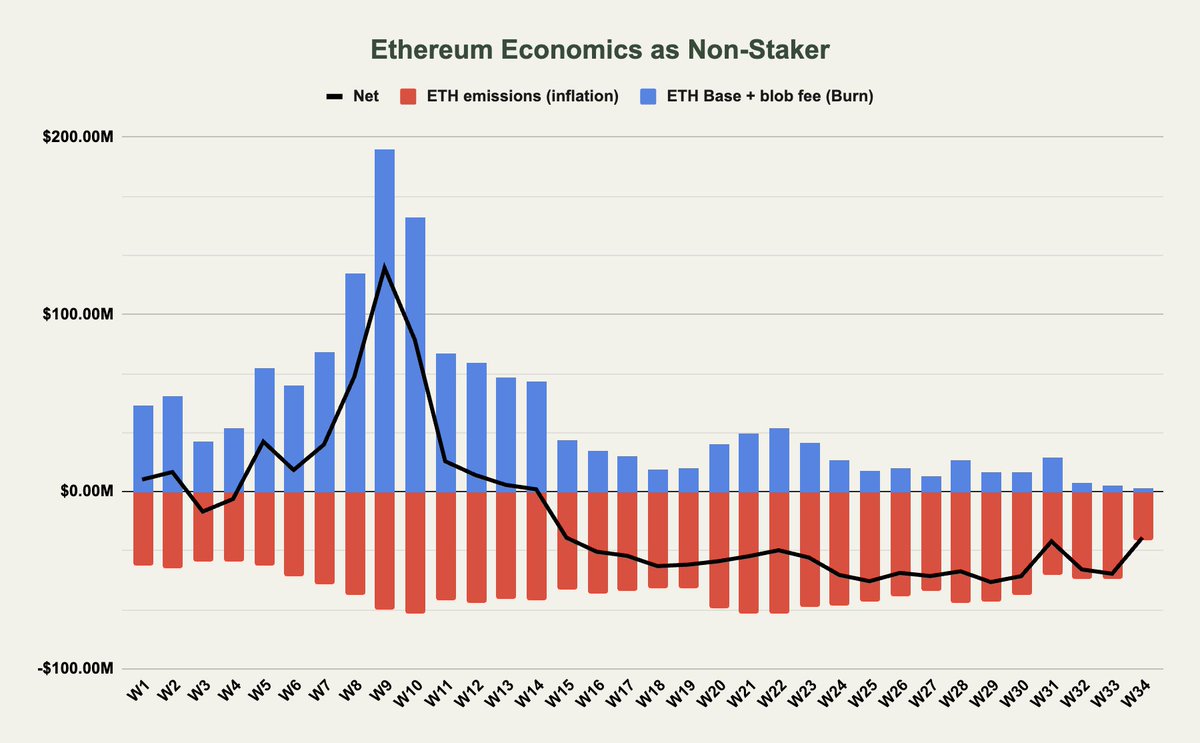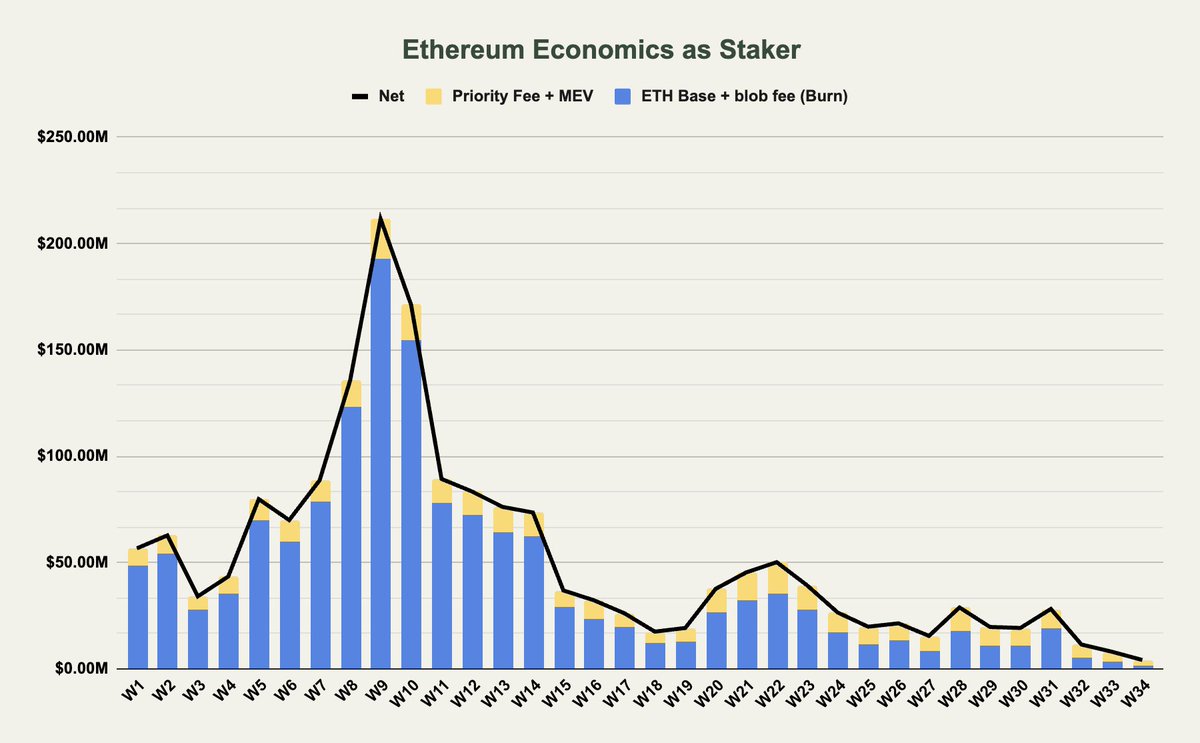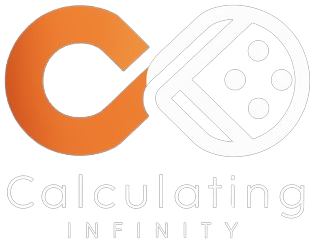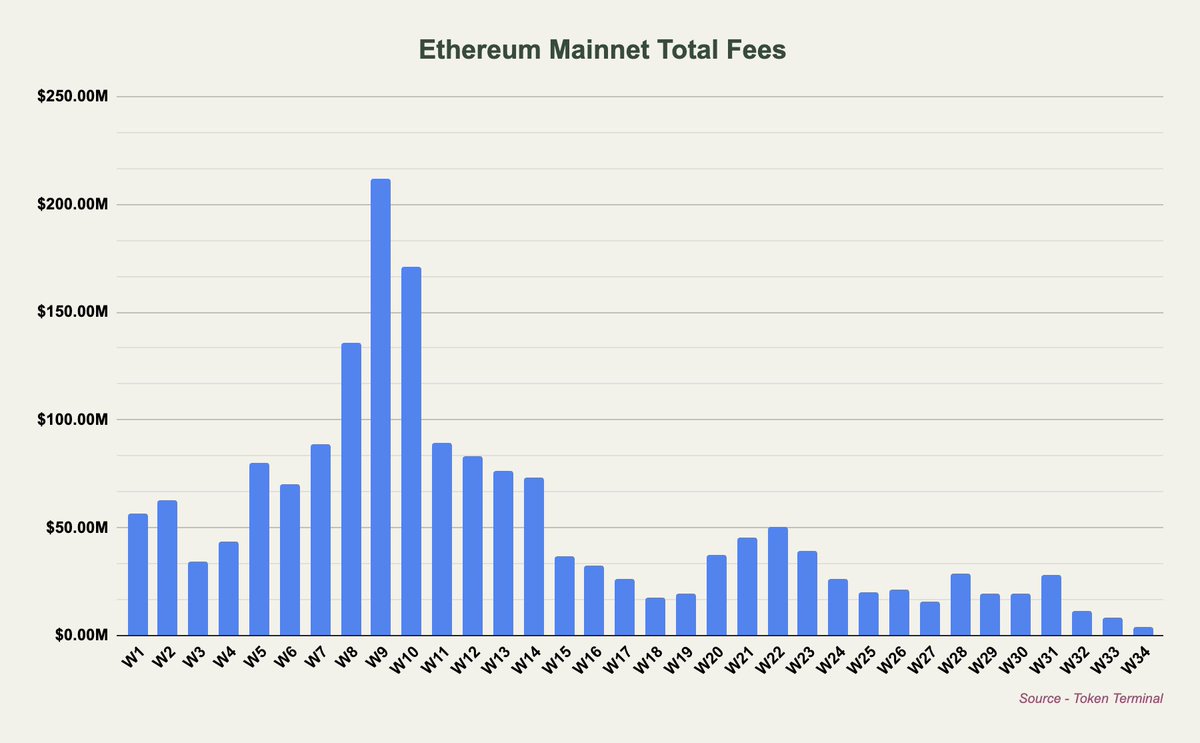Ethereum (ETH) which is addressed as ultra-sound cash as a consequence of its deflationary provide methodology, now seems to be going through new challenges which have prompted some analysts to query whether or not this narrative nonetheless holds.
A distinguished crypto analyst, Thor Hartvigsen, not too long ago highlighted this challenge in an in depth put up on X, the place he mentioned the present state of Ethereum’s charge era and provide dynamics.
Is ETH Not Extremely-Sound cash?
Hartvigsen identified that August 2024 is “on track to be the worst month in terms of fees generated on the Ethereum mainnet since early 2020.” This decline is essentially attributed to the introduction of blobs in March, which allowed Layer 2 (L2) options to bypass paying vital charges to Ethereum and ETH holders.
Consequently, a lot of the exercise has shifted from the mainnet to those layer two (L2) options, with a lot of the worth being captured on the execution layer by the L2s themselves.
Consequently, Ethereum has turn into internet inflationary, with an annual inflation charge of roughly 0.7%, that means that the issuance of recent ETH at present outweighs the quantity being burned by transaction charges.
Hartvigsen disclosed the affect of this on Non-Stakers and Stakers: In line with the analyst, non-stakers primarily profit from Ethereum’s burn mechanism, the place base charges and blob charges are burned, lowering the general provide of ETH.
Nonetheless, with blob charges typically at $0 and the bottom charge era lowering, non-stakers are seeing much less profit from these burns. On the identical time, precedence charges and Miner Extractable Worth (MEV), which aren’t burned however moderately distributed to validators and stakers, don’t profit non-stakers instantly.

Moreover, the ETH emissions that circulate to validators/stakers have an inflationary impact on the availability, which negatively impacts non-stakers. Consequently, the online circulate for non-stakers has turned inflationary, particularly after the introduction of blobs.
For stakers, the state of affairs is considerably totally different. Hartvigsen revealed that stakers seize all of the charges, both by the burn or by way of staking yield, that means that the online affect of ETH emissions is neutralized for them.
Nonetheless, regardless of this benefit, stakers have additionally seen a big drop within the charges flowing to them, down by greater than 90% since earlier this yr.

This decline raises questions in regards to the sustainability of the ultra-sound cash narrative for Ethereum. To reply that, Hartvigsen sated
Ethereum not carries the extremely sound cash narrative which might be for the higher.
What’s Subsequent For Ethereum?
Thus far, it’s fairly evident with the present traits that Ethereum’s ultra-sound cash narrative might not be as compelling because it as soon as was.
With charges lowering and inflation barely outpacing the burn, Ethereum is now extra corresponding to different Layer 1 (L1) blockchains like Solana and Avalanche, which additionally face comparable inflationary pressures, says Hartvigsen.
Hartvigsen notes that whereas Ethereum’s present internet inflation charge of 0.7% per yr remains to be considerably decrease than different L1s, the lowering profitability of infrastructure layers like Ethereum might necessitate a brand new strategy to sustaining the community’s worth proposition.
One potential answer the analyst mentioned is growing the charges that L2s pay to Ethereum, although this might pose aggressive challenges. Concluding the put up, Hartvigsen famous:
Zooming out, infra-layers are on the whole unprofitable (examine Celestia producing ~$100 in each day income), particularly if viewing inflation as a price. Ethereum is not an outlier with a internet deflationary provide and, like different infra-layers, require one other option to be valued.
Featured picture created with DALL-E, Chart from TradingView


